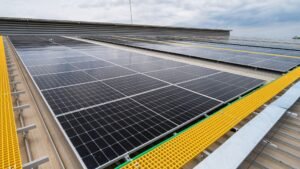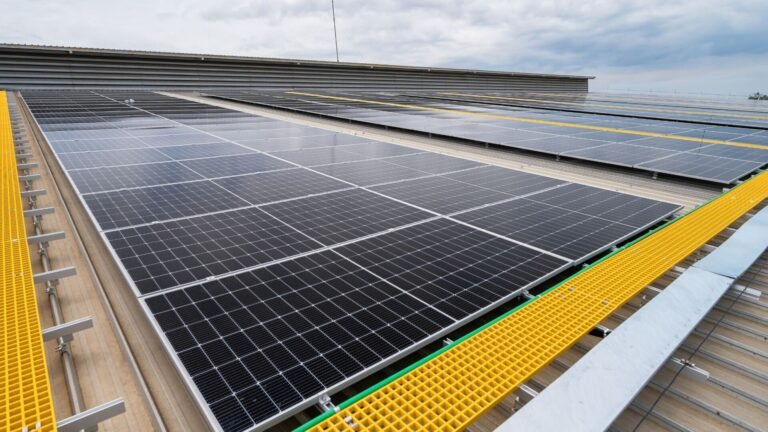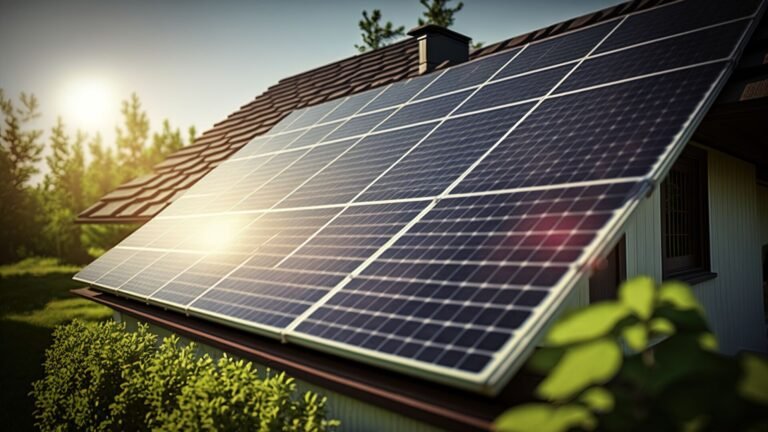Introduction
Solar panels, the emblem of clean energy, have a life journey that encapsulates the essence of sustainability. From their eco-friendly inception to their final recycling stages, each phase of a solar panel’s life is a testament to green technology. Let’s explore this incredible journey in detail.
1. The Genesis: Eco-Friendly Manufacturing
The lifecycle of a solar panel begins in the manufacturing phase. Raw materials like quartz and silver are transformed into photovoltaic cells. Innovations in manufacturing have made this process more sustainable, reducing carbon footprint and minimizing waste. The use of renewable energy sources in factories further enhances their green credentials.
2. The Leap to Functionality: Installation and Activation
Once manufactured, these panels are installed in residential, commercial, or industrial locations. The installation process is crucial; panels need to be strategically placed for maximum sunlight exposure. This phase demands skilled labor and precise engineering to ensure the panels operate at their full potential.
3. The Golden Years: Peak Energy Production
A solar panel’s prime life is about 25-30 years. During this period, they convert sunlight into clean, renewable energy, offsetting traditional energy sources and reducing greenhouse gas emissions. Their contribution to reducing the carbon footprint in these years is monumental.
4. Weathering Time: Durability Challenges
Solar panels are built to withstand harsh environmental conditions, but they aren’t impervious to wear and tear. External factors like storms, snow, and even bird droppings can impact their efficiency. This period calls for regular maintenance to maintain optimal performance.
5. The Decline: Efficiency Loss and Retirement
Over decades, solar panels gradually lose their efficiency. This decline signals the nearing end of their functional lifecycle. They may still function, but with reduced capacity, leading to the decision of whether to replace or continue using them at lower efficiency.
6. The Final Act: Recycling and Repurposing
The end of a solar panel’s life doesn’t mean its journey is over. Recycling these panels is critical. Specialized processes are used to recover glass, metals, and other materials. The goal is to salvage and repurpose as much as possible, ensuring minimal waste.
7. Challenges in Recycling
Recycling solar panels is not without its challenges. The process is intricate, requiring the separation of different materials. As the number of panels reaching the end of their life increases, the solar industry faces the need to scale up recycling facilities and processes.
8. Innovations in Solar Panel Recycling
Technological advancements are making solar panel recycling more efficient. New methods are being developed to extract more valuable materials, reduce energy usage in recycling, and even repurpose panels into new products. These innovations are crucial for maintaining the sustainability of solar energy.
9. The Economic Aspect of Recycling
Recycling also presents an economic opportunity. The materials recovered from old solar panels can be valuable. Establishing a robust recycling infrastructure can create jobs and contribute to a circular economy, where waste is minimized, and resources are reused.
10. The Future: Biodegradable Solar Panels
Research is underway to develop biodegradable solar panels, which would decompose naturally at the end of their lifespan. This innovation would represent a significant leap in sustainable energy technology, making solar panels even more environmentally friendly.
11. Consumer Responsibility and Awareness
As consumers, understanding the lifecycle of solar panels encourages responsible usage and disposal. Choosing panels from manufacturers committed to sustainability and recycling can make a big difference.
12. Legislation and Solar Panel Lifecycle
Governments play a crucial role in regulating the solar panel lifecycle. Enacting policies that mandate recycling and support sustainable manufacturing practices can significantly impact the industry’s environmental footprint.
13. The Role of Community in Sustainable Solar Practices
Community involvement and education about the importance of sustainable solar practices are vital. Community-led initiatives can promote the responsible use and disposal of solar panels, contributing to a greener environment.
Conclusion
The lifecycle of a solar panel, from its eco-conscious birth to its recycling finale, is a remarkable journey of sustainability. By understanding and participating in each stage of this journey, we can ensure that solar panels continue to be a beacon of green technology.






